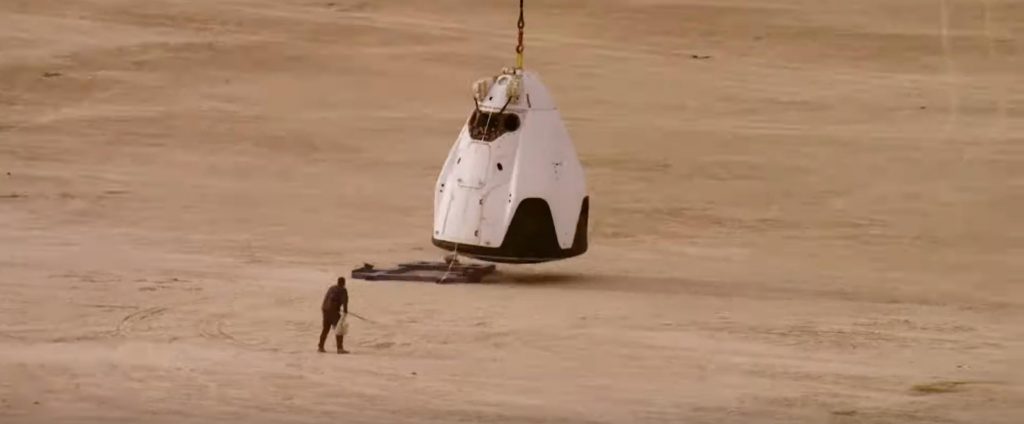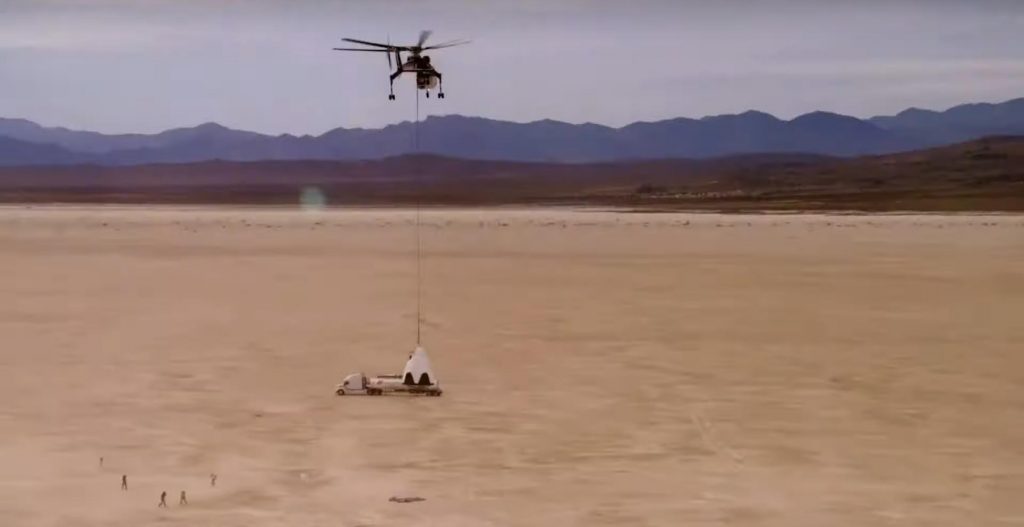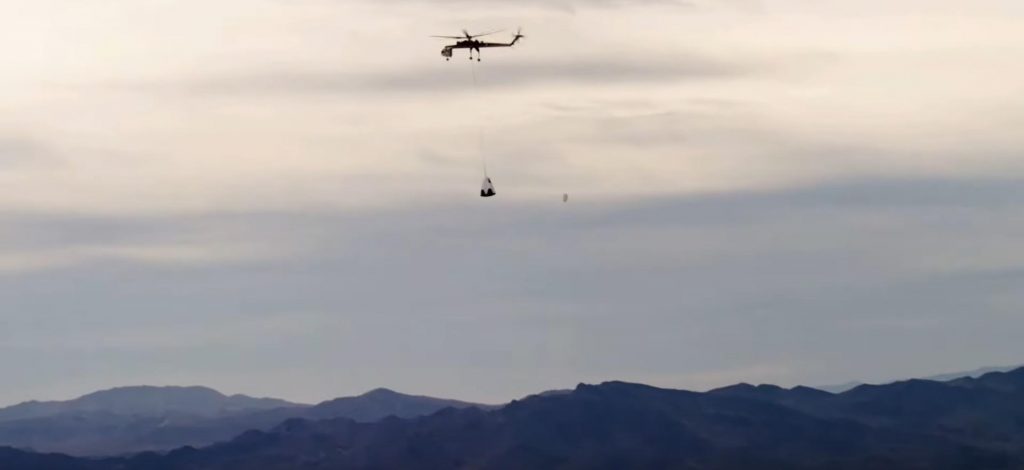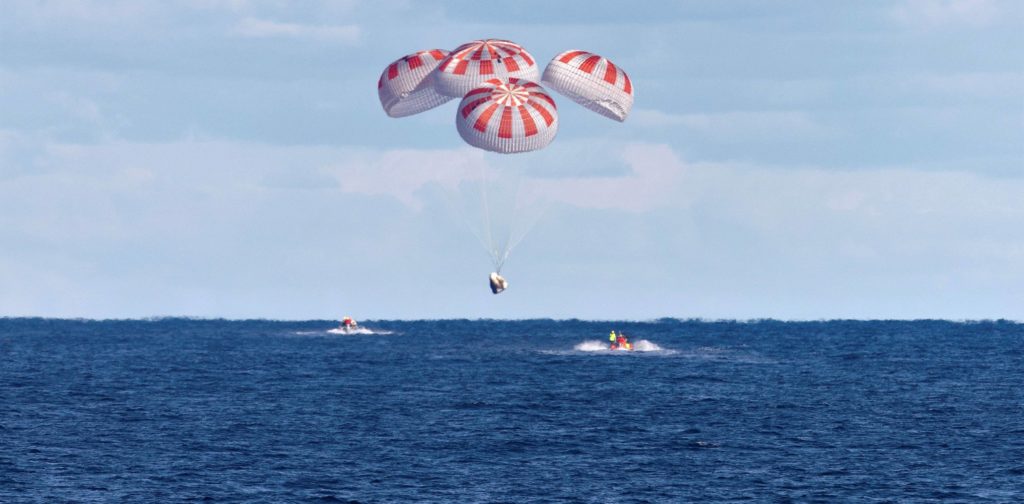SpaceX says it encountered an issue that forced it to drop a Crew Dragon spacecraft mockup during parachute testing — not a failure of the vehicle or its parachutes, to be clear, but still a problem nonetheless.
This is now the second significant hurdle SpaceX’s Crew Dragon astronaut spacecraft has faced in the last few days, following the revelation that NASA will not permit the company to launch astronauts until it completes an investigation into an in-flight rocket engine failure during its March 18th Starlink launch. There is likely no technical corollary for the new Falcon 9 rockets that will launch NASA astronauts, but existing Commercial Crew Program (CCP) contract rules still require SpaceX’s internal investigation be completed before it can proceed. With lives on the line, caution – within reason – is unequivocally preferable to the alternative.
Thankfully, SpaceX’s parachute test article anomaly should have a much smaller impact on Crew Dragon’s astronaut launch debut schedule, but it’s unlikely to have zero impact.
“During a planned parachute drop test [on Tuesday], the test article suspended underneath the helicopter became unstable. Out of an abundance of caution and to keep the helicopter crew safe, the pilot pulled the emergency release. As the helicopter was not yet at target conditions, the test article was not armed, and as such, the parachute system did not initiate the parachute deployment sequence. While the test article was lost, this was not a failure of the parachute system and most importantly no one was injured. NASA and SpaceX are working together to determine the testing plan going forward in advance of Crew Dragon’s second demonstration mission.”
SpaceX — March 24th, 2020
On March 24th, SpaceX says it was preparing for one of the last system-level Crew Dragon parachute tests planned before the spacecraft can be declared ready for human spaceflight. These final tests are reportedly focused on corner cases, referring to unusual but not impossible scenarios the spacecraft might encounter during operational astronaut landing attempts. Those likely include parachute deployment scenarios that are far more stressful than a nominal reentry, descent, and landing would allow.
Regardless, things did not go as planned during Tuesday’s test attempt. SpaceX primarily uses cargo planes, helicopters, and large balloons to carry its Crew Dragon test articles (not actual functional spacecraft) to the altitudes and speeds needed to achieve certain test conditions. On March 24th, SpaceX was using a helicopter – either a civilian Blackhawk or a much larger Skycrane.



For unknown reasons, the helicopter carrying the Crew Dragon test article on March 24th began to experience “instability”, likely referring to some sort of resonance (wobble, sway, oscillation, etc). Out of an abundance of caution, the pilot – likely highly trained – decided the instability was becoming an unacceptable risk and chose to drop the cargo load (a Crew Dragon mockup). Unsurprisingly, the parachute test article was not ready to drop and plummeted to the Earth without any kind of parachute deployment, likely pancaking on the desert floor shortly thereafter.
Again, it needs to be noted – as SpaceX did above – that the loss of the Crew Dragon parachute test article was entirely unrelated to the performance of the spacecraft or the parachutes it was testing. The mockup destroyed in the incident is essentially just a boilerplate mass simulator shaped like a Crew Dragon capsule to achieve more aerodynamically accurate test results. As such, it’s far simpler and cheaper than an actual Dragon spacecraft and shouldn’t take long at all to replace if SpaceX doesn’t already have a second similar mockup ready to go.

Thankfully, that means that the loss of the test article should have next to no serious impact on Crew Dragon’s inaugural astronaut launch schedule. Planned no earlier than (NET) mid-to-late May according to NASA’s latest official statement, SpaceX and the space agency still have at least a month and a half to work through a final parachute test campaign, complete an investigation into Starlink L6’s Falcon booster engine failure, and finish several trees worth of paperwork and reviews. Delays remain likely but they shouldn’t be more than a few weeks, barring any future surprises.

(adsbygoogle = window.adsbygoogle || []).push({});
<!–
–>
var disqus_shortname = «teslarati»;
var disqus_title = «SpaceX dropped a Crew Dragon mockup to save a helicopter and its passengers»;
var disqus_url = «https://www.teslarati.com/spacex-crew-dragon-mockup-helicopter-accident/»;
var disqus_identifier = «teslarati-134098»;

